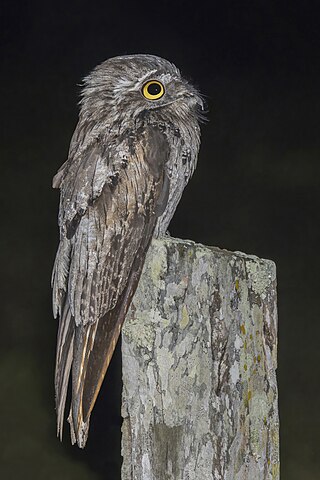
Potoos are a group of birds related to the nightjars and frogmouths. They are sometimes called poor-me-ones, after their haunting calls. The family Nyctibiidae was formerly included with the nightjars in the order Caprimulgiformes but is now placed in a separate order, Nyctibiiformes. There are seven species in two genera in tropical Central and South America. Fossil evidence indicates that they also inhabited Europe during the Paleogene.
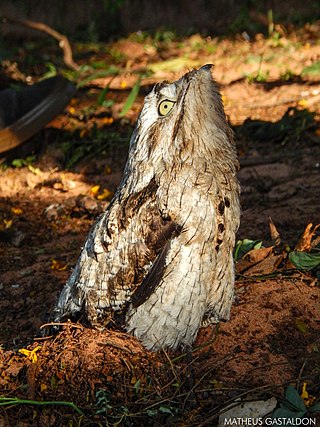
Nyctibius is a genus of potoos, nocturnal birds in the family Nyctibiidae.
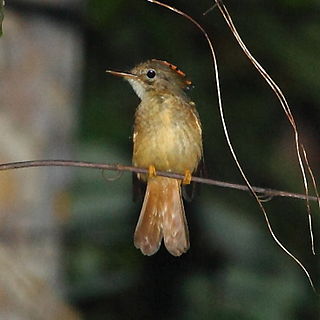
The royal flycatchers are a genus, Onychorhynchus, of passerine birds that the International Ornithological Committee (IOC) places in the family Tityridae.

The ochraceous wren is a small songbird of the wren family. It is a resident breeding species in Costa Rica, Panama, and Colombia.

The purple-throated woodstar is a species of hummingbird in tribe Mellisugini of subfamily Trochilinae, the "bee hummingbirds". It is found in Colombia, Ecuador, and Panama.

The straight-billed hermit is a species of bird in the family Trochilidae, the hummingbirds. It is found in Brazil, Colombia, Ecuador, French Guiana, Guyana, Peru, Suriname, and Venezuela.

The rufous-thighed kite is a species of bird of prey in subfamily Accipitrinae, the "true" hawks, of family Accipitridae. It is found regularly in Argentina, Bolivia, Brazil, Guyana, Paraguay, and Suriname and as a vagrant in Colombia, French Guiana, and Venezuela.

The rufous nightjar is a species of nightjar in the family Caprimulgidae. It is found in Argentina, Bolivia, Brazil, Colombia, Costa Rica, Ecuador, Guyana, Panama, Paraguay, Peru, Saint Lucia, Suriname, Trinidad and Tobago, and Venezuela.

The rufous-banded owl is a species of owl in the family Strigidae. It is found in Bolivia, Colombia, Ecuador, Peru, and Venezuela.

The Yungas screech owl, also known as montane forest screech-owl and Hoy's screech owl, is a species of owl in the family Strigidae. It is found in Argentina and Bolivia.

The cinnamon screech owl is a species of owl in the family Strigidae. It is found in the Andes of Ecuador and Peru and possibly Colombia.
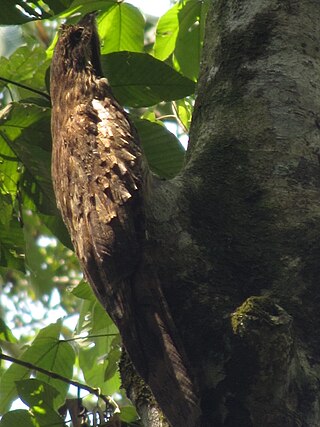
The long-tailed potoo is a species of bird in the family Nyctibiidae. It is found in every mainland South American country except Chile and Uruguay.
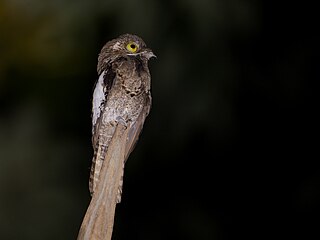
The white-winged potoo is a species of bird in the family Nyctibiidae. It is found in Brazil, French Guiana, Guyana, Peru, Suriname, and Venezuela.

The Andean potoo is a species of bird in the family Nyctibiidae. It is found in Bolivia, Colombia, Ecuador, Peru, and Venezuela.

The ash-throated crake is a species of bird in the subfamily Rallinae of the rail, crake, and coot family Rallidae. It is found in every mainland South American country except Chile.
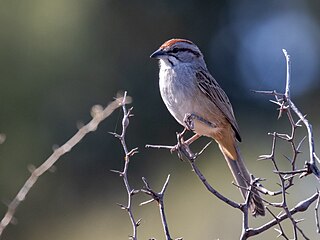
The Chaco sparrow, formerly known as the stripe-capped sparrow, is a species of bird in the family Passerellidae. It is found in Argentina and Paraguay.

The tawny-faced gnatwren or half-collared gnatwren is a species of bird in the family Polioptilidae, the gnatcatchers. It is found in Bolivia, Colombia, Costa Rica, Ecuador, Nicaragua, Panama, and Peru.

The northern potoo is a nocturnal bird belonging to the potoo family, Nyctibiidae. It is found from Mexico south to Costa Rica, and on the islands of Jamaica and Hispaniola. It was formerly classified as a subspecies of the common potoo but is now usually treated as a separate species based on differences in vocalizations.

The Amazonian trogon, is a species of bird in the family Trogonidae, the trogons and quetzals. It is found in Bolivia, Brazil, Colombia, Ecuador, Peru, and Venezuela.

The double-collared crescentchest is a species of bird in the family Melanopareiidae. It is found in eastern Bolivia and adjacent areas in Brazil.























